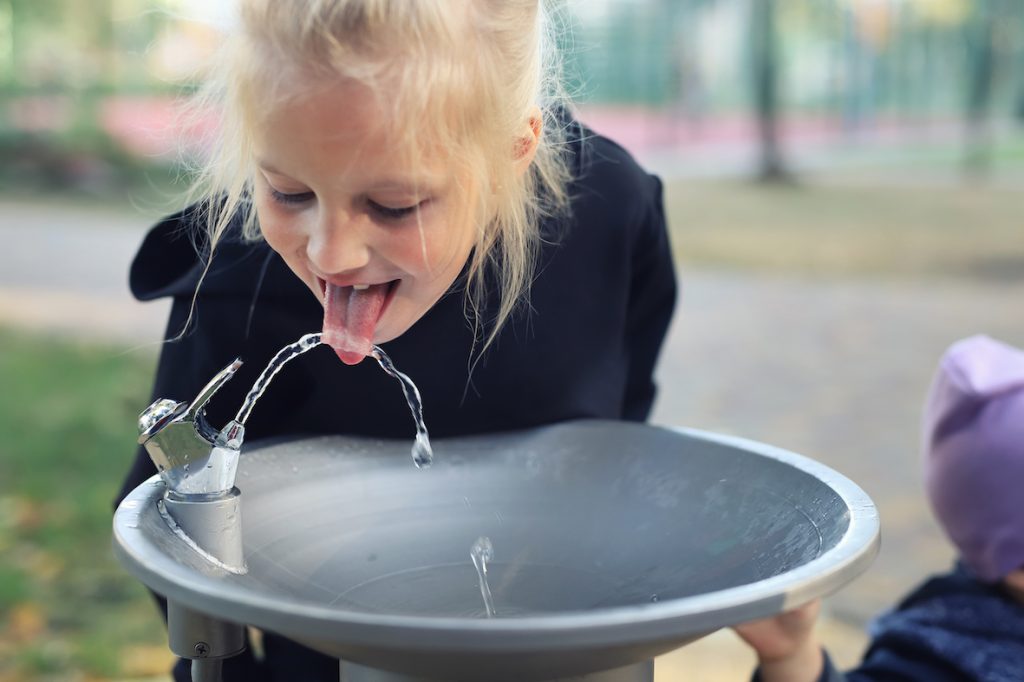No, you can’t catch it from drinking water. But yes, your office taps could be a problem.
Let’s face it, there’s more misinformation floating around about Legionella than there are bacteria in an abandoned hot tub. And just like that forgotten jacuzzi, these myths can be dangerous if left unchecked.
At HCS Water Treatment, part of Premier Technical Services Group Ltd (PTSG), we’ve spent over 30 years separating Legionella fact from fiction. We’ve heard it all – from the mildly amusing to the downright dangerous – and in this blog post, we’re setting the record straight.
Myth #1: You can catch Legionnaires’ disease from drinking contaminated water
The Truth: Unless you’re in the habit of inhaling your morning cuppa, you’re safe on this front. Legionnaires’ disease is contracted by inhaling tiny water droplets (aerosols) containing the bacteria – not by swallowing it.
Your digestive system is actually quite good at killing Legionella bacteria. Your lungs, however, roll out the welcome mat. This is why showers, cooling towers and decorative fountains are risk areas, while drinking fountains generally aren’t.
Why this myth is dangerous: It focuses concern on the wrong exposure routes. While you’re worrying about your drinking water, you might be ignoring that rarely-used shower in the executive bathroom that’s brewing trouble.
Myth #2: Modern buildings don’t have Legionella problems
The Truth: Oh, if only shiny new pipes were a bacterial forcefield. Unfortunately, Legionella doesn’t check your building’s age before moving in. In fact, some modern water system designs with their complex pipework and multiple outlets can create more opportunities for bacteria to colonise if not properly managed.
We’ve found Legionella lurking in everything from historic hotels to buildings so new the paint was barely dry. Age is just a number when it comes to bacterial risk.
Why this myth is dangerous: It creates a false sense of security. Building managers might skip essential monitoring because they believe their modern facility is somehow immune.
Myth #3: If no one’s been sick, there’s no Legionella problem
The Truth: This is like saying there’s no fire risk because your building hasn’t burned down yet. Legionella can colonise water systems for months or years before conditions align to cause an outbreak. Many systems harbour the bacteria below detection levels until something changes – a temperature fluctuation, a maintenance issue, a period of low usage and suddenly levels spike.
Additionally, not everyone exposed will develop symptoms and many cases of Legionnaires’ disease go undiagnosed or misdiagnosed as other types of pneumonia.
Why this myth is dangerous: It encourages reactive rather than preventative management. By the time someone falls ill, you’re already facing a serious problem that could have been prevented.
Myth #4: Cold water systems are safe from Legionella
The Truth: Colder is certainly better when it comes to Legionella control, but “cold” water systems in buildings can reach temperatures that bacteria find quite comfortable, especially in summer months or in internal pipes running through warm areas.
We regularly find cold water tanks and pipes sitting at 15-25°C during summer, well within the danger zone for bacterial growth if the water stagnates. And let’s not forget many buildings classified as having separate hot and cold systems actually have mixed water at outlets through mixer taps or TMVs.
Why this myth is dangerous: It leads to neglecting half of your water system in your monitoring and maintenance program.
Myth #5: Regular use of all water outlets prevents Legionella problems
The Truth: While regular use helps, it’s not a magic bullet. Legionella can establish itself in biofilm that slimy layer that builds up inside pipes, where it’s protected from flowing water and some treatments.
Even frequently used showers can harbour Legionella in shower heads and hoses where water sits after use. And let’s be honest how many outlets in your building truly get used “regularly”? That tap in the caretaker’s closet? The emergency eyewash station? The shower in the disabled toilet that’s used for storage?
Why this myth is dangerous: It oversimplifies a complex issue and creates false confidence. Flushing is important but needs to be part of a comprehensive water management strategy.
Myth #6: If the water looks clean, it’s safe
The Truth: Legionella bacteria are microscopic, between 0.5 and 0.8 micrometres long. To put that in perspective, you could fit about 100 of them across the width of a human hair. You won’t see them floating in your water like goldfish in a pond.
Some of the cleanest-looking water we’ve tested has returned concerning bacterial counts, while slightly discoloured water (from harmless minerals) has tested perfectly safe.
Why this myth is dangerous: Visual inspection has its place in water safety, but relying on the “eyeball test” alone is like trying to diagnose a heart condition by looking at someone’s chest.
Myth #7: Chemical treatments eliminate the need for temperature control
The Truth: Temperature control remains the foundation of Legionella management, even when chemical treatments are in place. Chemicals can be neutralised, dosing systems can fail, and some treatments don’t provide lasting residual protection.
Think of chemical treatments as an important supporting actor, not the star of the show. Temperature control, keeping hot water hot (above 50°C at outlets) and cold water cold (below 20°C), remains your front-line defence.
Why this myth is dangerous: Over-reliance on any single control measure creates vulnerability. Effective water safety requires multiple barriers of protection.
Myth #8: Legionella risk assessments are just a box-ticking exercise
The Truth: A proper Legionella risk assessment is to water safety what a thorough medical examination is to your health, fundamental, not formality.
A quality assessment identifies specific risks in your system, recommends tailored control measures, and forms the foundation of your entire water safety programme. It’s not generic, and it’s certainly not just paperwork.
Why this myth is dangerous: This mindset leads to superficial assessments that fail to identify real risks, creating a dangerous illusion of compliance without actual protection.
Myth #9: Small businesses don’t need to worry about Legionella
The Truth: Legionella bacteria don’t check your company’s headcount or turnover before settling into your pipework. The legal duty to control Legionella risk applies to all employers and those in control of premises, regardless of size.
In fact, smaller operations often face higher risks due to less frequent use of water systems, limited maintenance resources, or buildings that weren’t purpose-built for their current use.
Why this myth is dangerous: It leaves a significant sector of businesses vulnerable and potentially non-compliant with health and safety legislation.
Myth #10: Our building has never had Legionella, so we’re low risk
The Truth: Past performance is no guarantee of future results, a principle that applies to investments and water systems alike.
Changes in building usage, maintenance practices, water temperature, or even weather patterns can transform a previously “safe” system into a high-risk one surprisingly quickly. We’ve seen buildings with decades of clean testing suddenly develop problems after renovations, staff changes, or extended closures.
Why this myth is dangerous: It encourages complacency and can lead to scaling back monitoring and maintenance programmes that have actually been keeping problems at bay.
The HCS Approach: Reality-Based Water Safety
At HCS Water Treatment, our approach to water safety is built on three decades of real-world experience, not myths or misconceptions. Our formula for water safety success combines:
- Innovation: Using cutting-edge technology to detect what myths might lead you to overlook
- Expertise: Thirty years of experience across diverse sectors, giving us insight into what actually works
- Systems: Comprehensive water safety programs that address the real risks, not just the perceived ones
- People: Our team of specialists who understand that effective water safety comes from facts, not folklore
Knowledge Is Protection
Understanding the reality of Legionella, not the myths, is your first line of defence against this potentially deadly bacteria.
Remember: You won’t catch Legionnaires’ disease from drinking water, but your office taps could indeed be harbouring bacteria that could become aerosolised in sinks or connected showers. You can’t see Legionella with the naked eye, and even modern, regularly used systems need proper management.
Don’t let persistent myths leave your building vulnerable. When it comes to water safety, factual information isn’t just interesting, it’s essential.
Need help separating Legionella fact from fiction in your building? Contact HCS Water Treatment today on 0141 212 7247 or email us at hello@hcsuk.org for a reality-based assessment of your water systems. Because when it comes to water safety, what you don’t know really can hurt you.


